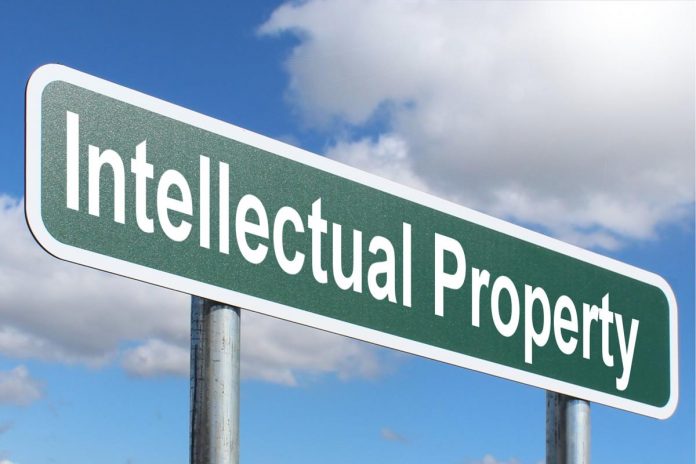This article is written by Varun Sharma, pursuing a Diploma in Entrepreneurship Administration and Business Laws, from Lawsikho.com. Here he discusses “Introduction to Intellectual Property”.

Introduction
With the ever-changing technology and shrinking world boundaries, the term “Intellectual Property” is coming to be used more often than ever. From tech companies, such as Samsung, Apple and Google to Biotechnology enterprises such as Monsanto, everyone is vigil about protecting their Intellectual Property. Therefore, it becomes important to understand what Intellectual Property is and what are the rights that individual acquire as their Intellectual Property rights.
What is Intellectual Property
Intellectual Property refers to the creations which are made using the mental labours of individuals. This includes a variety of creations such as literary works, technological inventions, performances, traditional practices etc. These can be broadly divided into two categories:
- Intellectual property used for protecting industrial inventions such as Patents, Trademarks etc.
- Intellectual property used for protecting literary interests such as copyright, related rights etc.
What are Intellectual Property Rights
Every individual who creates a literary work or invents an industrial technology is vested with certain rights such as the exclusive right to such literature or invention, right to gain monetary benefits from such intellectual property. All such rights that accrue to a person from the creation of intellectual property are known as Intellectual Property Rights.
Intellectual Property Rights can be held by an individual or a company. Generally, rights pertaining to literary works are held by an individual and industrial inventions are held by companies. But there are exceptions to this argument as well.
Types of Intellectual Property
Patents
Patents are the rights that are granted to an individual for the invention of a product or a process that offers a new way of solving a problem or for doing something. The main test for the grant of a patent is the novelty of the invention. An individual claiming a patent for his invention is required to show that his invention new. It adds to the technology that is already in existence in the field of his invention.
A Patent is granted for a fixed period of time. After the term period of a patent expires, it becomes free to use for the general public without paying any fees for it. Different countries have different term periods for which a patent is valid. The term for a standard patent in India, United States of America, Europe, and China is 20 years.
Other countries such as Canada, Japan, and Australia have different term period for different types of patents.
In India, the grant of patents is governed by the Patents Act, 1970
Trademark
A trademark is a distinctive mark by which the identity of a manufacturer, producer or service provider is known. These can be in the form of a logo, sign or written name. The recent trends have seen that form of packaging can also be trademarked. A trademark helps the consumer to associate a certain standard of quality to his products which can be easily relied upon by the consumer while choosing the products in an open market.
Trademark is granted for a certain term period. But unlike patents, a trademark can be renewed for as long as the owner wants by paying renewal fees in the concerned office. Both, as well as companies, can have trademarks.
Trademarks are country-specific i.e. they protect the identity of a company only in the country in which it has been filed. But this can be circumvented by organizations such as the World Intellectual Property Organisation (WIPO) which has an international registration system for trademarks.
In India, the grant of Trademarks is governed by the Trademarks Act, 1999.
Industrial Design
Industrial design refers to the visual aspects of a product that cannot be protected by a patent. It can be a surface or a three-dimensional design. It should be non-functional in nature i.e. it shall be purely in the nature of aesthetics and not utility. Product form a wide category such as technical instruments, medical instruments, garments, ornaments etc. can be protected under Industrial Design.
To be eligible for protection, the Industrial Design shall be new i.e. no similar design shall exist in the market. Some examples of Industrial designs are Coca Cola Contour bottle, iconic VW Beetle car and most recently the round-edged design of an iPhone which was the subject matter of a lawsuit between technology giants Apple and Samsung.
Geographical Indication
Geographical Indications indicates the place from where a product originates from. Such products have certain traits that can be found in the products that originate from that particular geographical location. The traits can be due to the natural conditions that prevail in that region such as Tuscany Olive oil or they can be due to certain skill traits that the workers of that region have such as chikankari work done on garments made in Lucknow.
For products that can be produced in a specific region only, an “Appellation of Origin” geographical indication is used. It indicates that product with such GI can be produced only in that part of the world and not anywhere else owing to the special geographical condition of that place. Some example of such products is “Bordeaux Wine” for wine produced in the Bordeaux region of France and “Basmati Rice” for rice produced in India.
Geographical Indication, in addition to protecting the manufacturer’s right of enjoying certain returns, also helps the consumer by protecting him from buying counterfeit products that are not related to the claimed geographical origins.
Copyright
Copyright is the rights which are granted to the creators of creative works. Creations such as literary works (literature, poetry, and non-fiction) and artistic works (paintings, music) are protected under Copyright laws. Newspapers, as well as architecture designs, are protected by copyright laws as well.
It also protects rights which originates out of such creative creations. They are known as Related Rights. These are rights which have been accrued due to the availability of the copyrighted content. Some examples of related rights are right of an artist to their performances, rights of a music producer to the digital rendition of their music etc.
Copyrights can be held by individuals as well as companies. Unlike other forms of Intellectual Property, the Copyright holders enjoy the rights in his creation for the lifetime. Even after their death, Copyright continues to exist for a period of 50-60 years depending upon the jurisdictions. In such a scenario, the holder of the Copyright exercises controls over the Copyright.
Related rights, on the other hand, don’t enjoy such duration of protection as Copyright does. Subject to the jurisdiction Related rights are generally valid for a period of 50 years from the date of performance or broadcast.
Unlike the other types of Intellectual Property, Copyright holders are not required by the law register their creations as they are automatically protected under the Copyright laws from being exploited of their creative creations. But there do exist laws that allow the creators the option of registering their creations with the concerned authorities.
Protection of Intellectual Property
Why Protect Intellectual Property
The protection of Intellectual Property is important in the face of the fact that it promotes competition and development. Companies spend huge sums of money to develop new technologies with the aim of scoring some edge over their competitors. This grant of protection functions as incentivization of the efforts and money that is spent by the enterprises for inventing new technology. And the consumer ends up gaining the most as he is able to avail the newest technologies at cut-throat prices.
In the absence of such protection, individuals, as well as big enterprises, will refrain from investing and developing new technology. The companies will wait for the other to develop new technology and then simply copy it without any consequences. Something of this sort is still afoot in China. The development will come to a standstill and the biggest loser among all this would be the consumer.
How is Intellectual Property Protected
Intellectual Property has been the subject matter of a huge volume of litigation today. The reason being, it is really easy to steal or infringe upon the intellectual property of another in this globalized world. Hence it becomes important that sufficient care is taken to protect our intellectual property.
There are a plethora of laws across various jurisdictions that are aimed at protecting an individual’s intellectual property within their jurisdiction. In the Indian context, there are various laws such as the Copyright Act, the Trademarks Act, Patents Act and the Designs Act that are formulated for the protection of an individual’s intellectual property. Any individual can claim protection for their intellectual property under these laws.
On the international level, these laws have been supported and complemented by international institutions like WIPO. WIPO has been working towards creating a harmonious playground for intellectual property internationally. It has been administering various international treaties, conventions as well as agreements for harmonious construction of the laws of various jurisdiction.
Conclusion
Intellectual Property has been a growing field for some time now. And it is poised to grow further with the coming time as well. With the ever-growing and expanding economy, it is more important than ever for an individual to know as well as to protect his intellectual property rights.
Students of Lawsikho courses regularly produce writing assignments and work on practical exercises as a part of their coursework and develop themselves in real-life practical skill.
 Serato DJ Crack 2025Serato DJ PRO Crack
Serato DJ Crack 2025Serato DJ PRO Crack










 Allow notifications
Allow notifications


